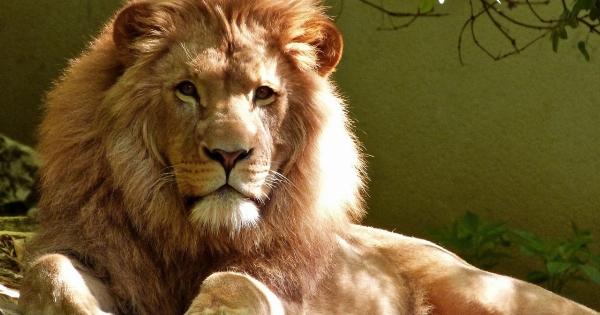Sexual selection refers to the process by which certain traits and behaviors evolve in a species due to their influence on mating success.
It is a mechanism that operates alongside natural selection, which favors traits and behaviors that enhance survival. Charles Darwin first proposed the concept of sexual selection in his book “The Descent of Man” in 1871, recognizing the importance of competition for mates in the evolution of species.
1. Intrasexual Selection: Fighting for Mates
In many animal species, males compete with each other for access to females. This type of sexual selection is known as intrasexual selection. Male-male competition can take various forms, such as physical combat or displays of strength and dominance.
The winners of these contests typically have a greater chance of mating and passing on their genes to the next generation.
2. Intersexual Selection: Beauty and Courtship
In contrast to intrasexual selection, intersexual selection involves mate choice by one sex based on the attractiveness of individuals from the opposite sex.
In this type of sexual selection, females generally have the power to select mates based on certain desirable traits or behaviors displayed by males. These traits may include intricate courtship displays, bright colors, or complex calls.
3. Ornaments and Good Genes
Many animals exhibit extravagant ornaments or elaborate displays to attract mates. These ornaments, such as the peacock’s tail or the bird of paradise’s plumage, can be energetically costly to develop and maintain.
The presence of such extravagant traits is often an indicator of good genetic quality, as only individuals with strong genes can afford to invest in these elaborate displays while still surviving and reproducing.
4. Female Choice and “Handicap” Hypothesis
The “handicap” hypothesis suggests that by choosing males with extravagant traits or displays, females are selecting for genes that confer greater resistance to parasites, diseases, or other genetic defects.
The ability to survive and reproduce despite these costs is believed to indicate high genetic quality and overall fitness. Therefore, females selecting males with such traits are more likely to have offspring with higher chances of survival.
5. Runaway Sexual Selection
Runaway sexual selection occurs when both the preference for a specific trait and the trait itself become increasingly exaggerated over time.
This positive feedback loop can lead to the rapid evolution of exaggerated traits that may appear maladaptive or even hinder survival. The classic example is the long elaborate tail feathers of the male peacock, which can impede their ability to escape predators.
However, because peahens consistently prefer males with longer tails, this trait has become more pronounced in peacocks over generations.
6. Honest Signals: Reliable Indicators
In the context of sexual selection, signals and displays act as indicators of an individual’s genetic quality or overall fitness.
Honest signals are those that accurately reflect an individual’s true qualities, as any falsely exaggerated signals would be detrimental to survival. For instance, the bright red coloration of male cardinals serves as an honest signal of their health and vitality. Females can rely on these honest signals to make informed choices when selecting mates.
7. Sexual Dimorphism: Physical Differences
Sexual dimorphism refers to the differences in physical characteristics between males and females of a species. These differences are often the result of sexual selection, with males possessing more elaborate or exaggerated traits.
For example, male lions exhibit a mane, which serves as a visual signal of their strength and dominance. In contrast, female lions generally lack a prominent mane, as they do not engage in male-male competition for mates.
8. Cryptic Female Choice
While intersexual selection is typically associated with female choice, recent research has highlighted the importance of cryptic female choice.
Cryptic female choice refers to the selection process that occurs inside the female reproductive tract, where females have the ability to bias fertilization towards certain males or even manipulate sperm within their reproductive system. This phenomenon adds another layer of complexity to sexual selection and can influence the outcome of mate competition.
9. Bateman’s Principle: Asymmetry of Reproductive Investment
Bateman’s principle states that the variance in reproductive success is generally higher in males compared to females.
This is because males typically invest less in individual offspring, as their limiting factor is often the number of mates they can acquire. Females, on the other hand, generally invest more in offspring due to the costs associated with pregnancy, gestation, and lactation.
This asymmetry in reproductive investment contributes to the evolution of different strategies and behaviors related to sexual selection.
10. Human Sexual Selection
Although sexual selection is often associated with animals, it is also relevant in understanding human behavior and evolution. In humans, sexual selection factors can influence mate choice, physical attractiveness, and reproductive success.
Cultural factors, such as societal norms and individual preferences, interact with biological factors to shape the dynamics of sexual selection in human populations. Understanding the science of sexual selection can provide insights into various aspects of human society and behavior.



























